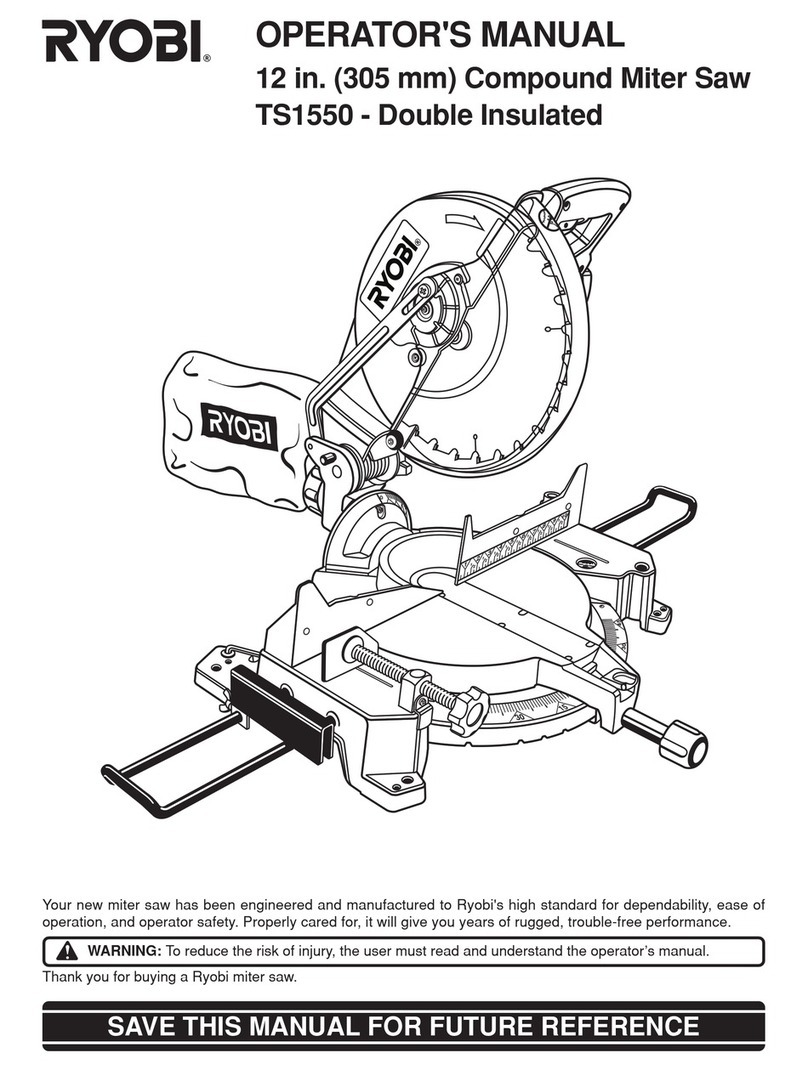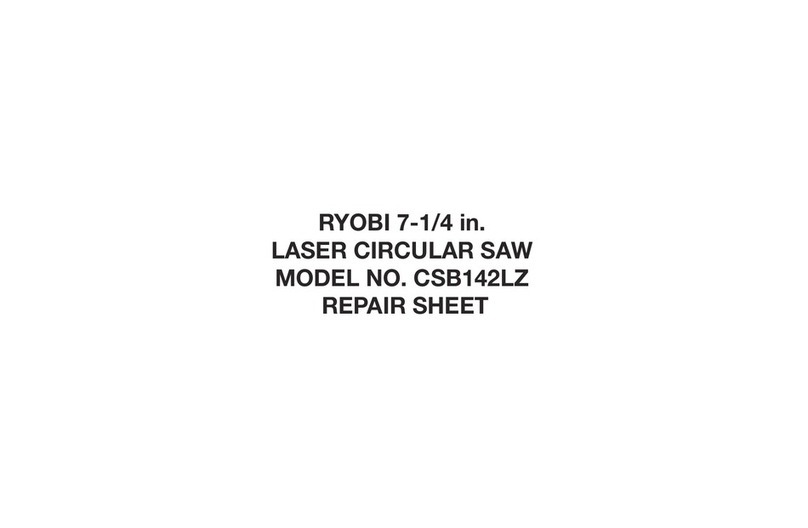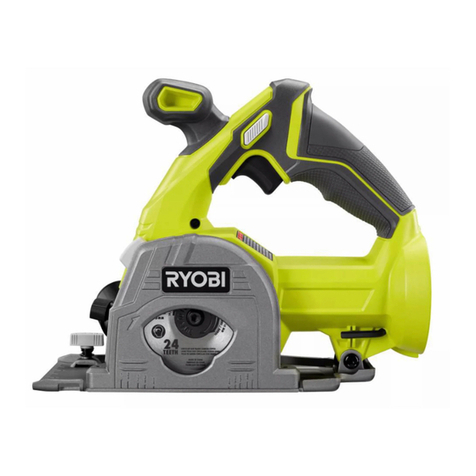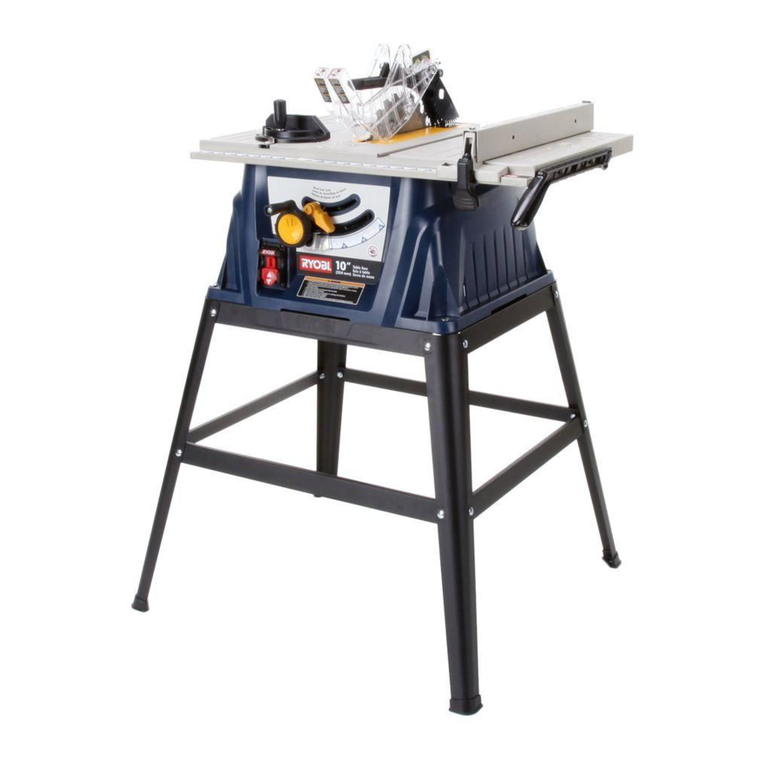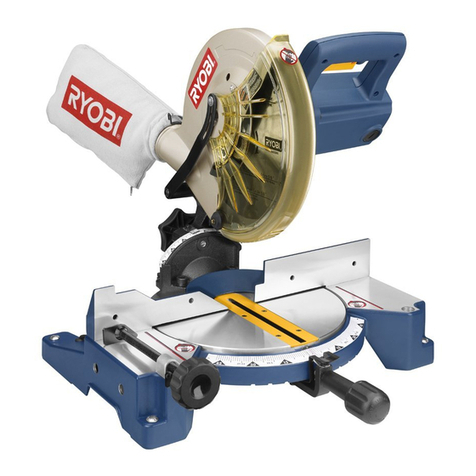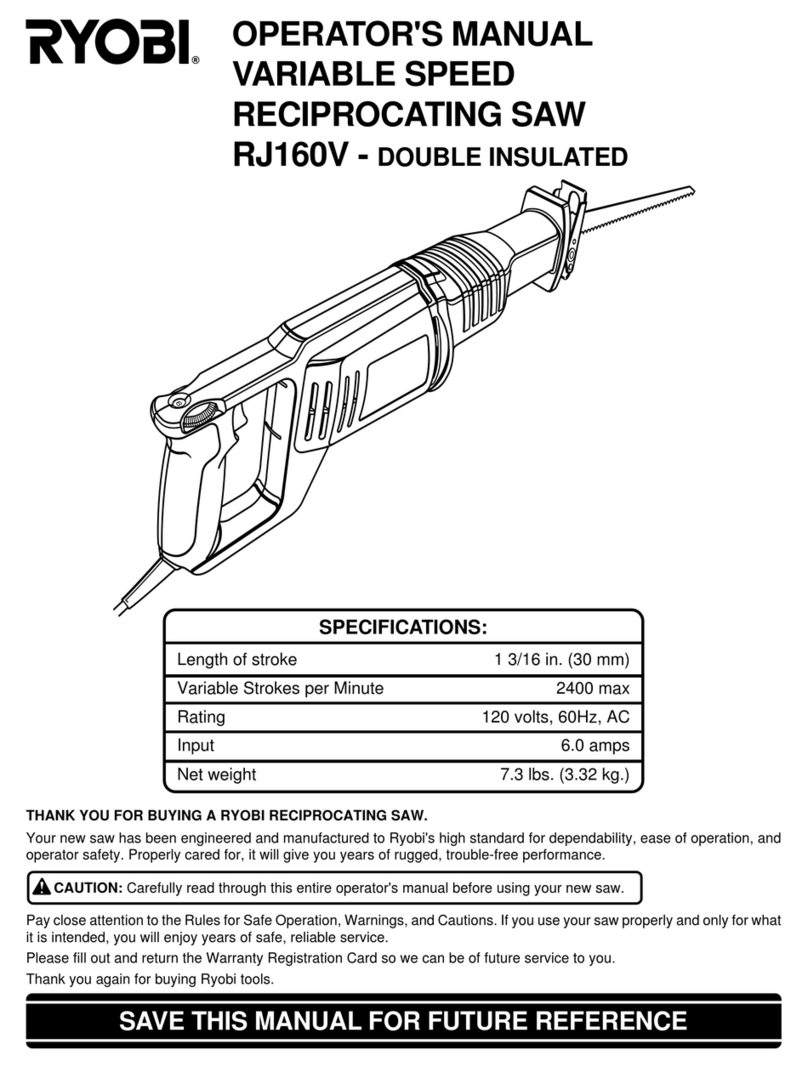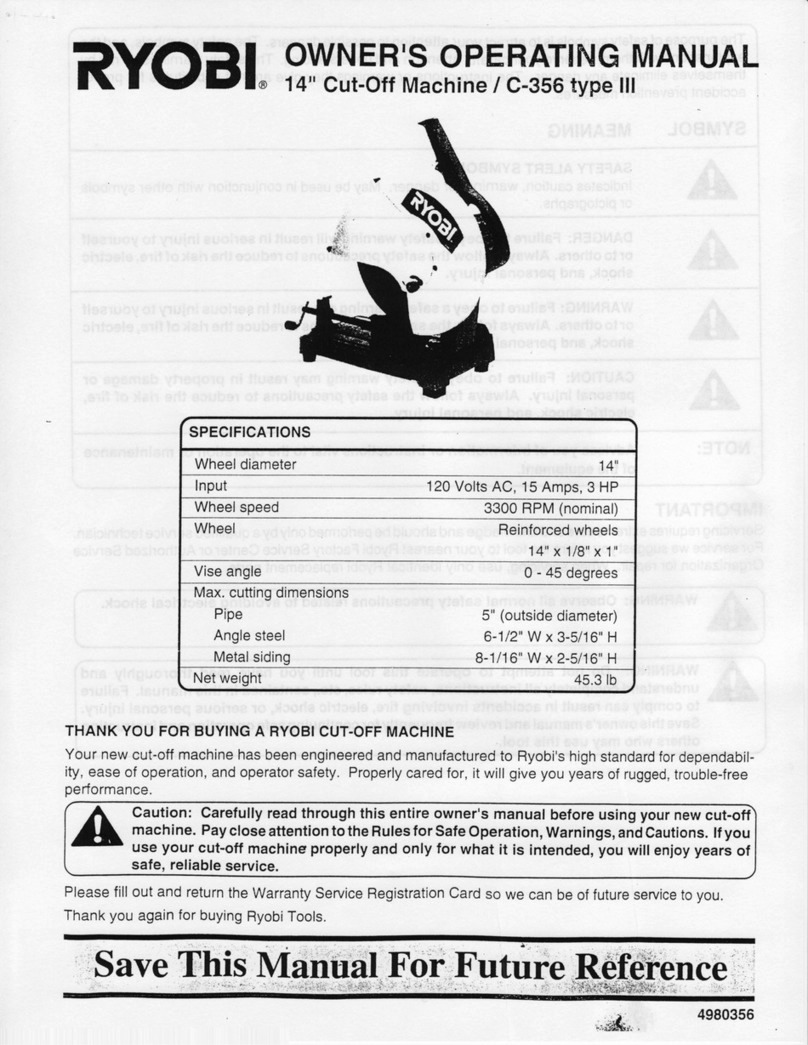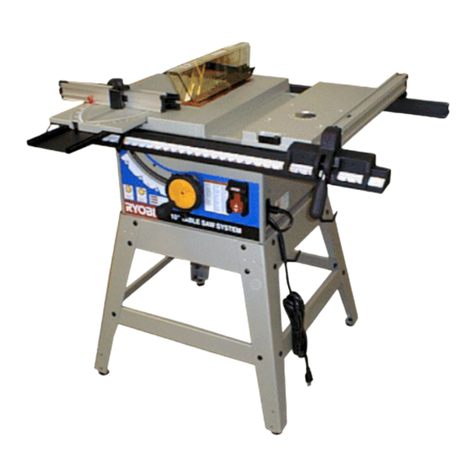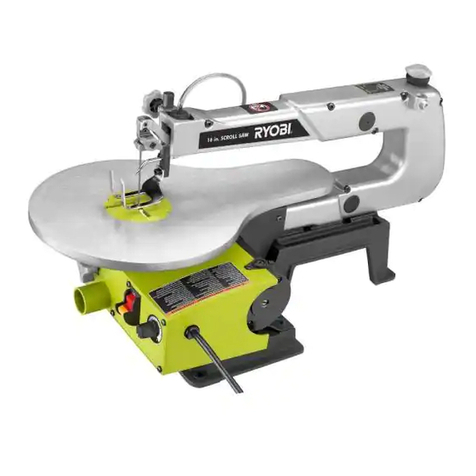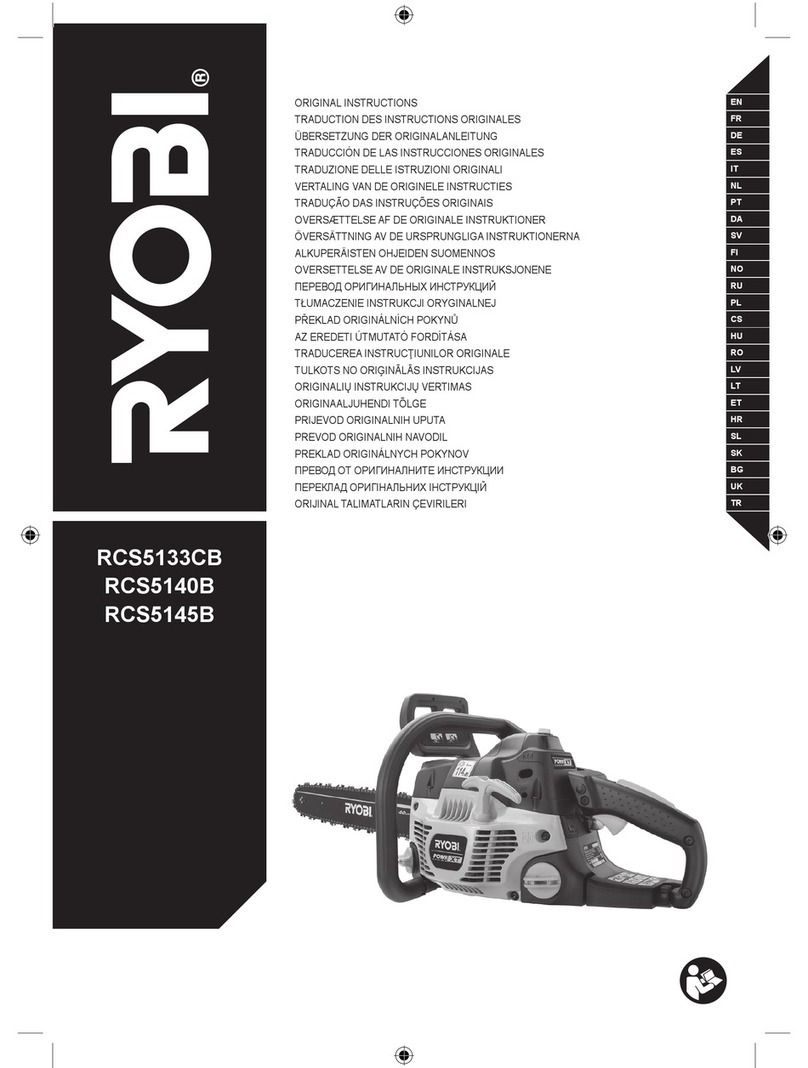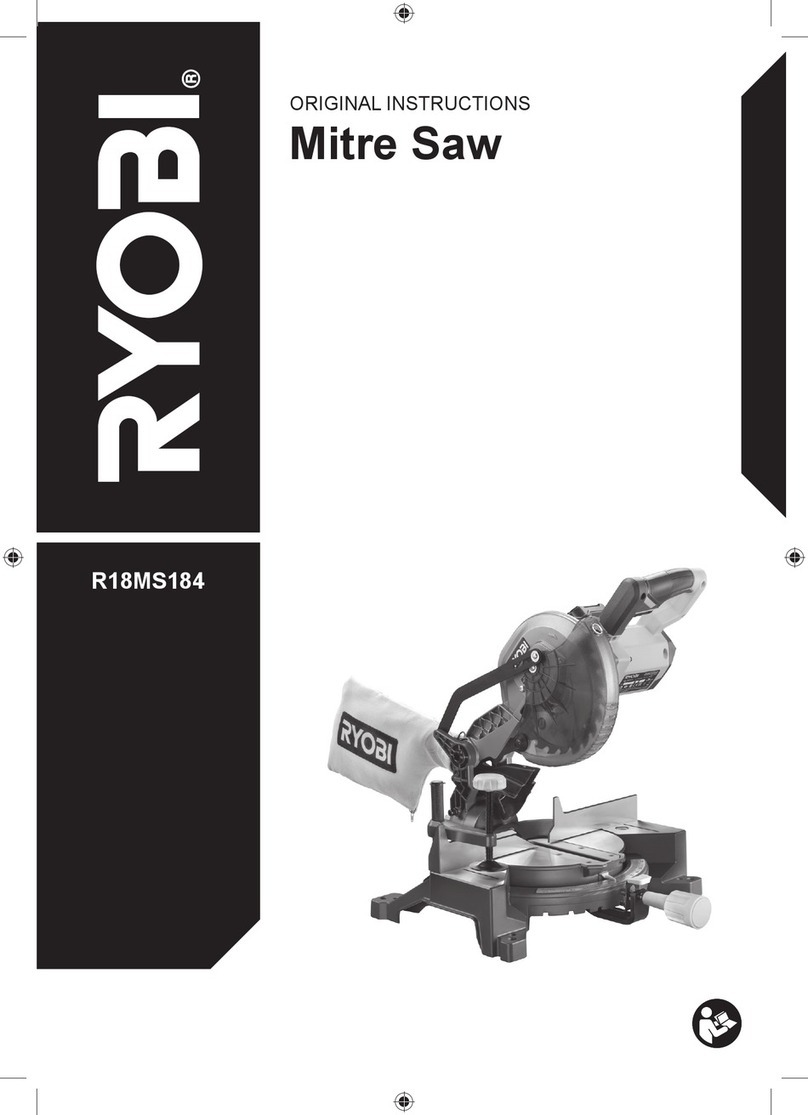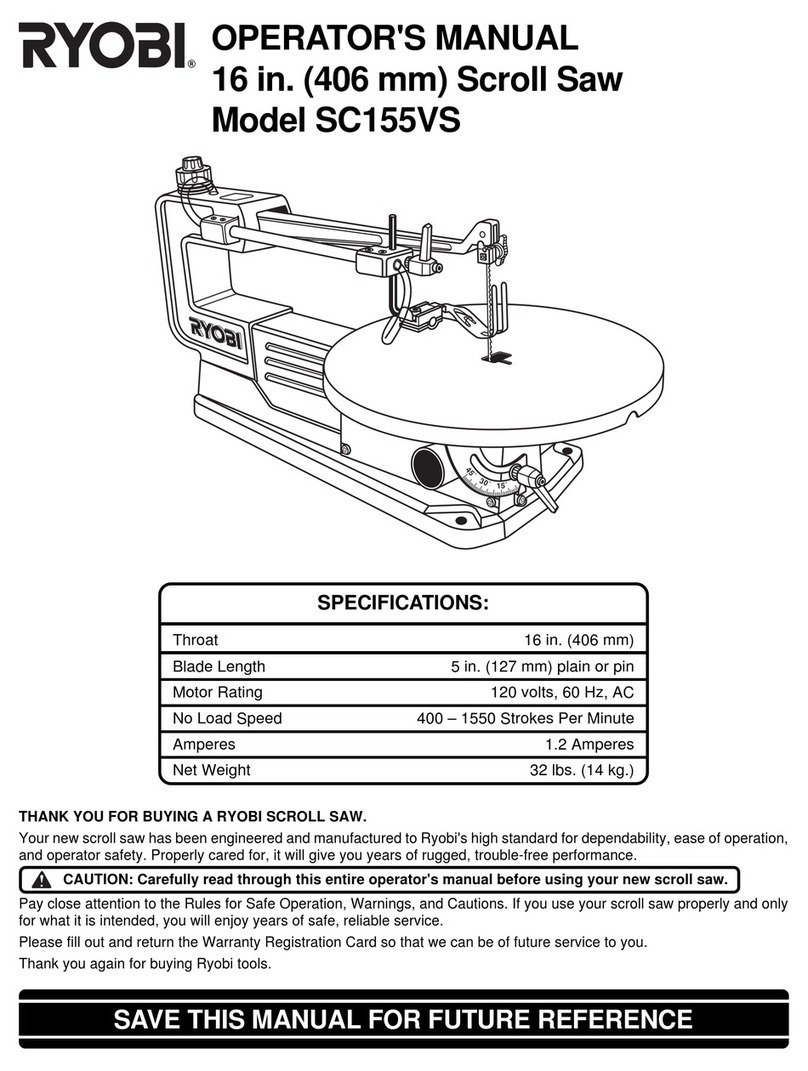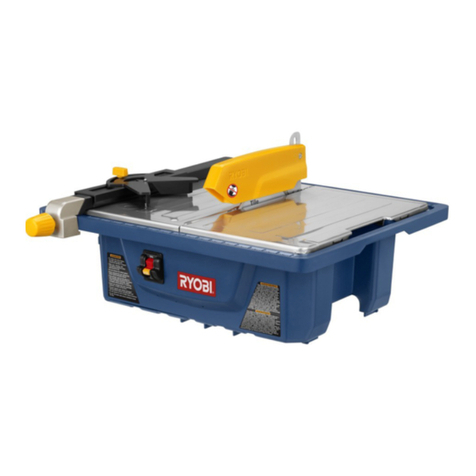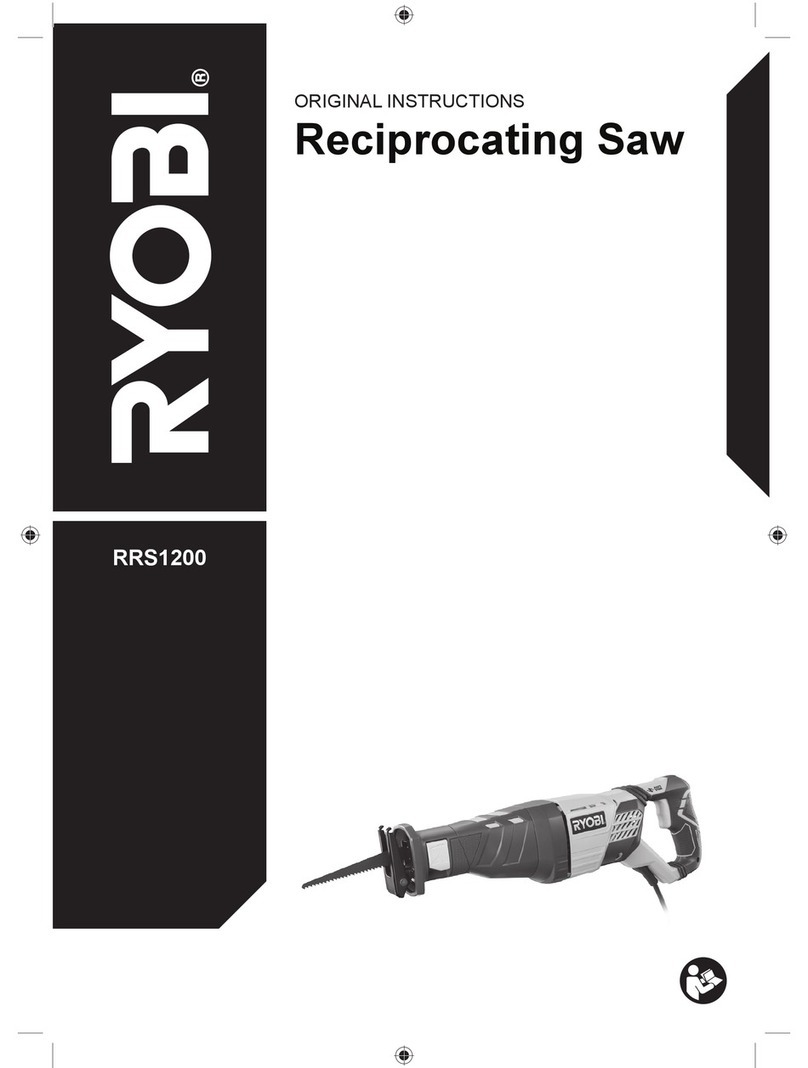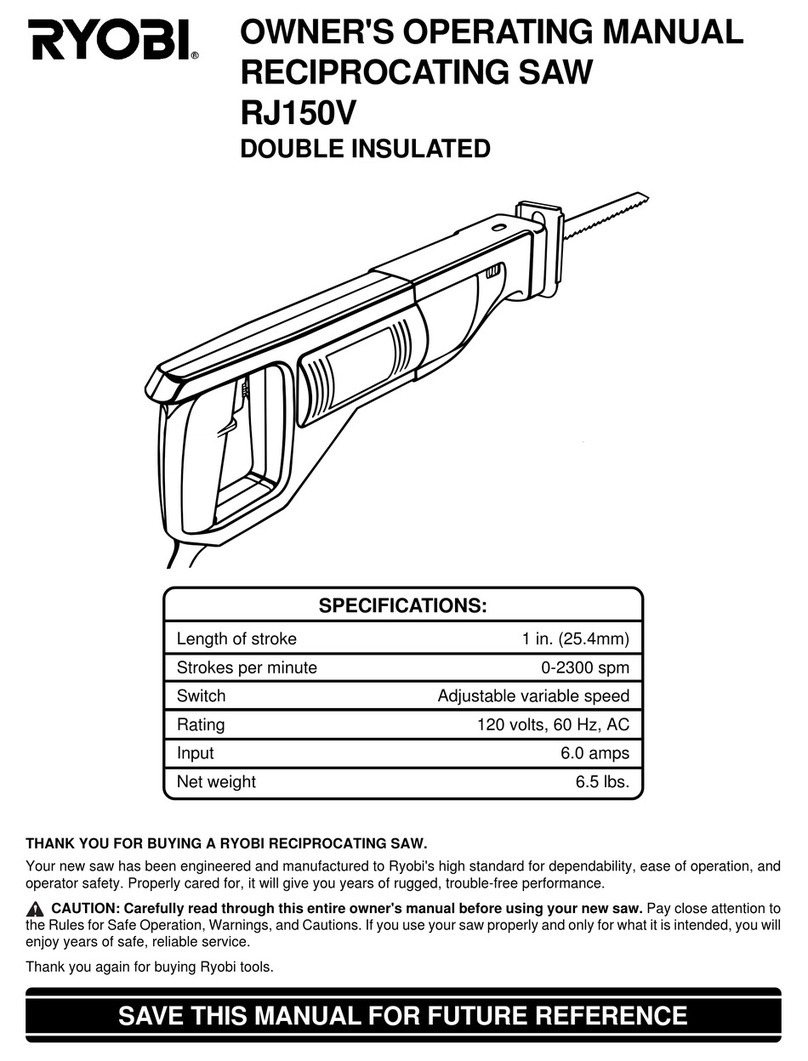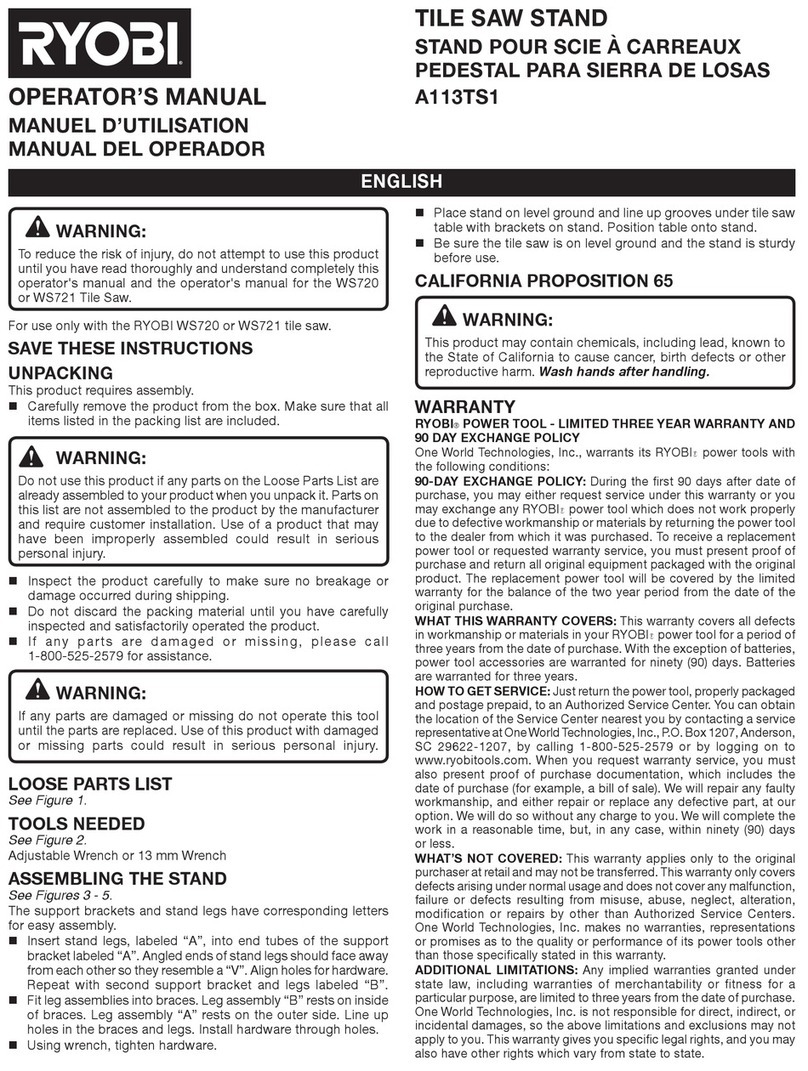
3English |
EN
FR
DE
ES
IT
NL
PT
DA
SV
FI
NO
RU
PL
CS
HU
RO
LV
LT
ET
HR
SL
SK
EL
TR
the workpiece is lifted from the table by the rear portion of
WKHVDZEODGHDQGLVSURSHOOHGWRZDUGVWKHRSHUDWRU
.LFNEDFN LV WKH UHVXOW RI VDZ PLVXVH DQGRU LQFRUUHFW
operating procedures or conditions and can be avoided by
WDNLQJSURSHUSUHFDXWLRQVDVJLYHQEHORZ
ŶNever stand directly in line with the saw blade.
Always position your body on the same side of
the saw blade as the fence. Kickback may propel the
workpiece at high velocity towards anyone standing in
IURQWDQGLQOLQHZLWKWKHVDZEODGH
ŶNever reach over or in back of the saw blade to pull
or to support the workpiece. Accidental contact with
the saw blade may occur or kickback may drag your
ILQJHUVLQWRWKHVDZEODGH
ŶNever hold and press the workpiece that is being
cut off against the rotating saw blade. Pressing
the workpiece being cut off against the saw blade will
FUHDWHDELQGLQJFRQGLWLRQDQGNLFNEDFN
ŶAlign the fence to be parallel with the saw blade. A
misaligned fence will pinch the workpiece against the
VDZEODGHDQGFUHDWHNLFNEDFN
ŶUse a featherboard to guide the workpiece against
the table and fence when making non-through cuts
such as rebating or resawing cuts. A featherboard
KHOSVWRFRQWUROWKHZRUNSLHFHLQWKHHYHQWRIDNLFNEDFN
ŶSupport large panels to minimise the risk of saw
blade pinching and kickback. Large panels tend to
VDJXQGHUWKHLURZQZHLJKW6XSSRUWVPXVWEHSODFHG
under all portions of the panel overhanging the table
WRS
ŶUse extra caution when cutting a workpiece that
is twisted, knotted, warped or does not have a
straight edge to guide it with a mitre gauge or along
the fence. A warped, knotted, or twisted workpiece is
unstable and causes misalignment of the kerf with the
VDZEODGHELQGLQJDQGNLFNEDFN
ŶNever cut more than one workpiece, stacked
vertically or horizontally. The saw blade could pick
XSRQHRUPRUHSLHFHVDQGFDXVHNLFNEDFN
ŶWhen restarting the saw with the saw blade in the
workpiece, centre the saw blade in the kerf so that
the saw teeth are not engaged in the material. If the
saw blade binds, it may lift up the workpiece and cause
NLFNEDFNZKHQWKHVDZLVUHVWDUWHG
ŶKeep saw blades clean, sharp, and with sufficient
set. Never use warped saw blades or saw blades
with cracked or broken teeth. Sharp and properly set
VDZEODGHVPLQLPLVHELQGLQJVWDOOLQJDQGNLFNEDFN
TABLE SAW OPERATING PROCEDURE WARNINGS
ŶTurn off the table saw and disconnect the power
cord when removing the table insert, changing
the saw blade or making adjustments to the riving
knife or saw blade guard, and when the machine
is left unattended. Precautionary measures will avoid
DFFLGHQWV
ŶNever leave the table saw running unattended. Turn
it off and don’t leave the product until it comes to
a complete stop. An unattended running saw is an
XQFRQWUROOHGKD]DUG
ŶLocate the table saw in a well-lit and level area
where you can maintain good footing and balance.
It should be installed in an area that provides
enough room to easily handle the size of your
workpiece. Cramped, dark areas, and uneven slippery
IORRUVLQYLWHDFFLGHQWV
ŶFrequently clean and remove sawdust from under
the saw table and/or the dust collection device.
Accumulated sawdust is combustible and may self-
LJQLWH
ŶThe table saw must be secured. A table saw that is
QRWSURSHUO\VHFXUHGPD\PRYHRUWLSRYHU
ŶRemove tools, wood scraps, etc. from the table
before the table saw is turned on. Distraction or a
SRWHQWLDOMDPFDQEHGDQJHURXV
ŶAlways use saw blades with correct size and shape
(diamond versus round) of arbour holes. Saw
blades that do not match the mounting hardware of the
VDZZLOOUXQRIIFHQWUHFDXVLQJORVVRIFRQWURO
ŶNever use damaged or incorrect saw blade
mounting means such as flanges, saw blade
washers, bolts or nuts. These mounting means were
specially designed for your saw, for safe operation and
RSWLPXPSHUIRUPDQFH
ŶNever stand on the table saw, do not use it as a
stepping stool. 6HULRXV LQMXU\ FRXOG RFFXU LI WKH
product is tipped or if the cutting tool is accidentally
FRQWDFWHG
ŶMake sure that the saw blade is installed to rotate
in the proper direction. Do not use grinding wheels,
wire brushes, or abrasive wheels on a table saw.
Improper saw blade installation or use of accessories
QRWUHFRPPHQGHGPD\FDXVHVHULRXVLQMXU\
ADDITIONAL SAFETY WARNINGS FOR TABLE
SAWS
ŶSetup or fix the machine in a stable position appropriate
IRUWKHZRUNEHLQJGRQH7KLVFRXOGEHPRXQWHGRQD
ZRUNEHQFKOHJVXSSRUWRUIL[HGWRWKHIORRU
Ŷ,IILWWHGVHWWKHDGMXVWDEOH OHJH[WHQVLRQWRDFKLHYH D
OHYHOVWDEOHSODWIRUPWRZRUNRQ
ŶWorking at the proper height, using good working
SRVWXUHZLOOKHOSSUHYHQWVWUDLQRURWKHULQMXULHVGXULQJ
RSHUDWLRQ
ŶProvide adequate general or localised lighting to
SUHYHQWVWURERVFRSLFHIIHFWDQGKD]DUGV
ŶWear suitable personal protective equipment when
QHFHVVDU\7KLVLQFOXGHVKHDULQJSURWHFWLRQWRUHGXFH
the risk of hearing loss, respiratory protection to reduce
the risk of inhaling harmful dust, sturdy gloves when
KDQGOLQJVDZEODGHVDQGURXJKPDWHULDO
Ŷ$OZD\VZHDUVDIHW\JRJJOHVZKHQXVLQJWKHPDFKLQH,W
is recommended to wear sturdy non slipping shoes with
WRHFDSVWRSURWHFWIURPREMHFWVIDOOLQJIURPWKHWDEOH
ŶThe dust produced when using this tool may be harmful
WR\RXUKHDOWKLQIODPPDEOHRUH[SORVLYH'RQRWLQKDOH
WKH GXVW 8VH D GXVW H[WUDFWLRQ V\VWHP DQG ZHDU D
VXLWDEOHGXVWSURWHFWLRQPDVN5HPRYHGHSRVLWHGGXVW
WKRURXJKO\HJZLWKDEUXVKDQGYDFXXPFOHDQHU

